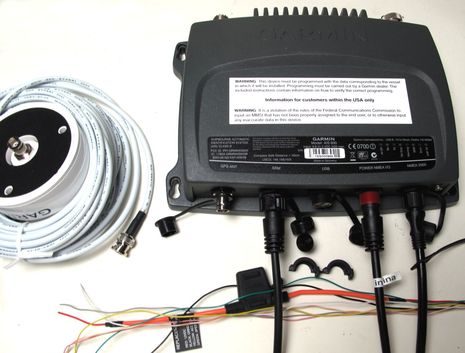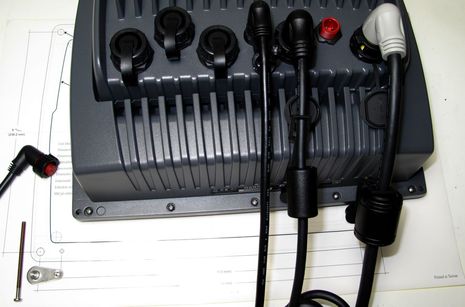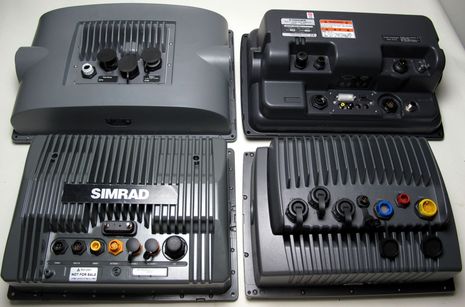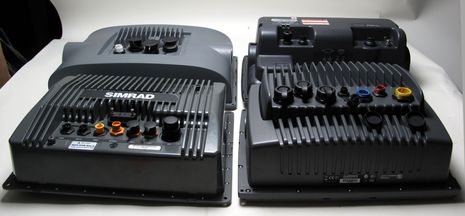Garmin 7000 and AIS 600, some install details

Today I checked out some just-received Garmin gear prior to installation on Gizmo, and I noticed some nice little changes. For instance, this AIS 600 has an automotive blade fuse instead of a glass cartridge and its relatively flimsy holder (which should all vanish from boats, I think). And Garmin's included NMEA 2000 cable is thicker than it used to be, indicating, I'd guess, some added EMI protection (needed to get NMEA certification, pdf on that subject here). Garmin has also started using separate split screw collars -- seen on and off in the photo -- on lots of connectors besides Ethernet, which means easier to run cables (in some situations). Note, too, the most LED indicators I've ever seen on a Class B transponder. Tentatively speaking, the thing seemed to work pretty well too...
I had a little trouble with the 600's USB drivers, probably due to the decrepit XP laptop I was using, and couldn't get the installer software to write an MMSI, etc. to the transponder. Hence it's only in receive mode now, but Coastal Explorer did recognize the troubled port and showed A and B targets at good distances. The Garmin GPSMap 7212 I also received got the same A and B targets, all static data included, over N2K. (As you may recall, earlier NMEA 2000 displays and transponders got a little messed up because not all the standard messages were created in a timely manner; hopefully that's getting straightened out, and I'll sure have a chance to find out in the coming months.)Meanwhile all of the 7212's cables, Ethernet excepted, have color coded right angle connectors, including a (thick) 2 meter N2K cable that would be useful in lots of installs. I also liked the included stick-on template, which made cutting Gizmo's new Azek expanded PVC flying bridge dash easy. And check out the detail at the lower left of the photo below. You can not only screw fasten the 7212 from the face side -- which has thankfully become the standard -- but by using those threaded "ears" you can even bolt it from the face, which would be stronger and would hold up better to repeated pull outs. The 7000 series is heavier and deeper than its sibling 5000 series, but doesn't look huge compared to its competition...
 I don't suppose these photos below do quite the job of actual size specifications, but isn't it interesting to see the backsides of what are arguably the four top gun MFDs of 2010? They are, of course, the Garmin 7212, the Simrad NSE12, the Raymarine E140 Wide, and the Furuno MFD12, and they'll all be on functioning on Gizmo sometime next week, hopefully (and should have been already ;-).
I don't suppose these photos below do quite the job of actual size specifications, but isn't it interesting to see the backsides of what are arguably the four top gun MFDs of 2010? They are, of course, the Garmin 7212, the Simrad NSE12, the Raymarine E140 Wide, and the Furuno MFD12, and they'll all be on functioning on Gizmo sometime next week, hopefully (and should have been already ;-). At heart, these MFDs are all dedicated PCs, but don't these shots say something about build quality and water-tightness, not to mention the cooling of bright screens and hot processors and -- maybe most important -- dedicated marine connectivity?
At heart, these MFDs are all dedicated PCs, but don't these shots say something about build quality and water-tightness, not to mention the cooling of bright screens and hot processors and -- maybe most important -- dedicated marine connectivity?

 Share
Share
I'm curious about the possibility of using these sorts of MFD's mounted in the open (at the helm of a sailing boat) without a fiberglass pod. Does it look like the connections and case are sealed well enough to permit operation in an environment that will include salt spray and rain?